Japanese desserts have a special place in my heart. They’re usually not overly sweet and have a delicate balance of flavors that makes them unique. Anmitsu is a good example. This one’s made with Japanese

What’s anmitsu? あんみつって何?
Anmitsu is a Japanese dessert commonly made with kanten (jelly like blocks), syrup and anko (sweet red bean paste).
There are many variations and one of the classics calls for fruit.
As much as I like fruit, I don’t like to mix it in this dessert.
I prefer eating fruit as it is, on it’s own.
How about you?
if you like fruit with other sweet things that’s cool with me!
If you do make the classic version of this I think a canned fruit (that’s soaked in syrup) would be best. Would you agree?
Because then it wouldn’t be as overpowered by the syrup and sweet anko as a fresh piece of fruit might be.
Just a thought.
So since we now know I don’t like fruit with this dessert, that explains why I made it with
In particular, Japanese green
Both add a beautiful color and wonderful Japanese tea flavor to each bite.
Have you heard of kanten before?
Did you know you can make it with
Read on or watch the video below to see how this all came together 🙂

What’s kanten? 寒天って何?
Kanten is not the same as gelatin and it’s not the same as agar-agar.
When you’re making Japanese foods that specifically call for it… you may or may not be able to substitute depending on what you’re trying to make.
If you do, the texture may be compromised because kanten is more firm than agar-agar and gelatin.
The good thing about kanten? Well, there’s not just one, there’s many!
- zero calories
- subtle flavor that lends itself to multiple uses – savory and sweet
- made by algae as opposed to being an animal product
- it’s cheap
- did i miss any?
So are you curious about this seemingly magical ingredient?
Have you heard of or used kanten before? lmk in the comments!
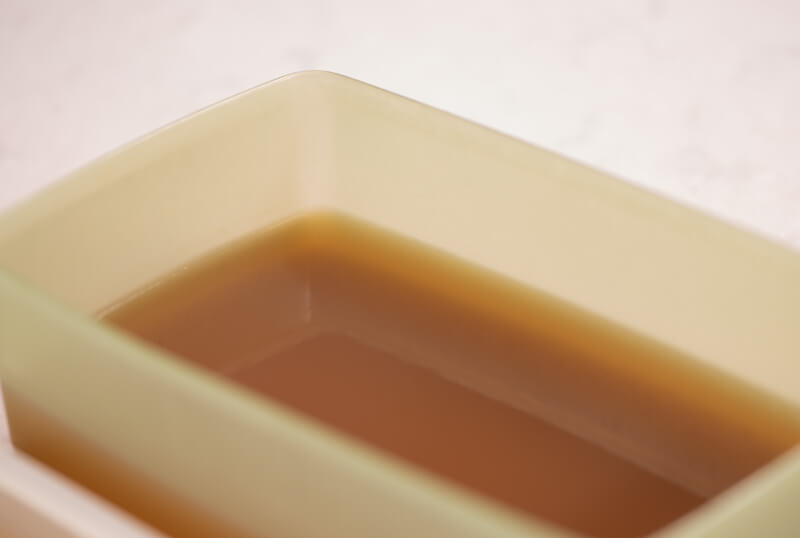
Tips for making this kanten 寒天のコツ
- remember that you’ll be drizzling syrup over the base ingredients, so you may or may not want to use sugar to sweeten the kanten. up to you.
- like jello, jelly or any similar foods, kanten lasts a few days, but since we’re using
tea , i feel like the flavor deteriorates after a few days. so while i’d love to tell you to make double or triple batch, it may not be worth your trouble. - if you use powdered kanten follow the recipe on the package substituting the liquid with
tea . you can use coffee or other types oftea too, aside from hojicha, i’ve enjoying sencha (japanese greentea ), as well as blacktea in kanten. - the
tea we used today is a specialtea – Kamairicha from Miyazaki prefecture, Kyushu, Japan. it’s got a unique flavor that i enjoyed in the cup and while not cheap, it’s not expensive or so premium (that I wouldn’t want to put it in food). i don’t think premiumtea and matcha should be used for anything except for drinking. i hope you agree there.
Tips for making this anmitsu あんみつのコツ
- generally the shiratama (glutinous rice balls) are best eaten the same day they’re made (due to the texture getting hard if you refrigerate) though you can recook to make it soft again. i still think it’s best the same day it’s made
- i prefer all the ingredients to be chilled, though if you’ve freshly made the anko and shiratama they can be enjoyed warm
- for the anko, you’re supposed to smush it all, but i really don’t like mashed anko unless it’s in something like dorayaki, so i leave almost all of the azuki (red beans) whole, mashing about 10%. i think the textures better that way. personal preference.
- go easy on the sugar for the anko too, i used 1/2 cup which is plenty for 1 dried cup of azuki.
- consider serving with a scoop of japanese ice cream like this matcha or hojicha ice cream
Other considerations for the anmitsu ingredients
- you can repurpose the kanten and anko for other japanese desserts like a parfait, kakigori , or anko specifically for dorayaki
- the shiratama can actually be eaten as is, with a little kuromitsu (okinawan black sugar syrup) along with some kinako flour. super tasty!
Want to see how I put this anmitsu together? Watch this video – Japanese dessert | Anmitsu with hojicha and kamairicha kanten
So whatcha think?
Have you had anmitsu before?
Will you be trying this recipe?
PrintHow to make kanten with hojicha and kamaricha (Japanese green teas)
Japanese desserts have a special place in my heart. They’re usually not overly sweet and have a delicate balance of flavors that makes them unique. Anmitsu is a good example. This one’s made with Japanese tea blocks (kanten) which have a firm bite with plenty of tea flavor. I added a couple of tablespoons of sugar for sweetness but it’s totally optional. If you enjoy tea and you enjoy dessert, this is the best of both worlds and might be your new favorite way to enjoy both!
- Prep Time: 5 minutes
- Cook Time: 5 minutes
- Total Time: 3 hours 10 minutes
- Yield: 5 cups 1x
- Category: Dessert
- Cuisine: Japanese
Ingredients
- 2 sticks kanten
- 2 1/2 cups hojicha (roasted green tea)
- 2 1/2 cups kamairicha (or other japanese green tea)
- 4 tablespoons sugar (2 per batch of kanten, optional)
- anko, shiratama, kuromitsu (for toppings)
Instructions
- Rinse and soak kanten in water for at least 30 minutes. You can break into pieces if it doesn’t fit.
- Squeeze out soaking water and brew 2 1/2 cups of tea for each stick.
- Using two separate saucepans, add 2 tablespoons of sugar and one stick of kanten to each pot. Add in hot tea and bring to a boil and cook for 2 minutes.
- Using two flat glass containers or plastic containers, pour and allow to cool and set (1 hour). Place in the refrigerator after they’ve come down to room temp. (~2 hours)
- Cut into small cubes about 1/4-1/2 in thick and serve in a small dessert bowl.
- Top with anko, shiratama, and kuromitsu.


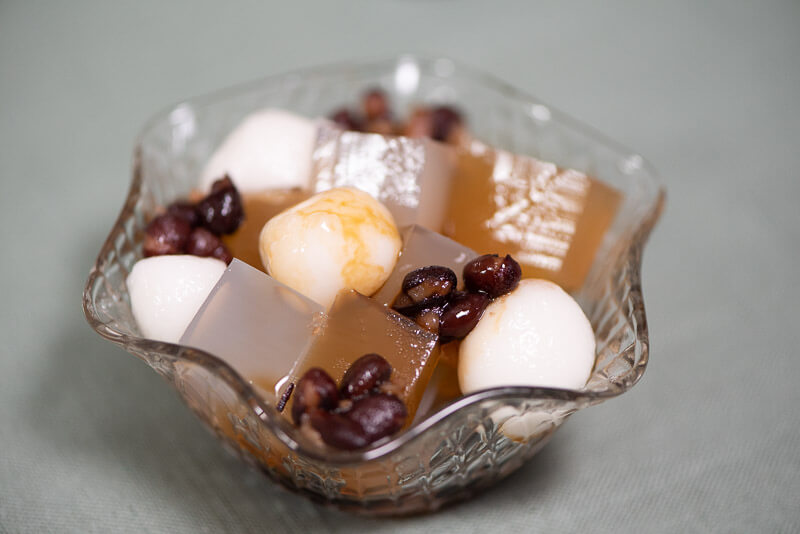
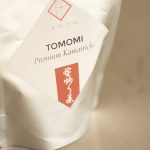
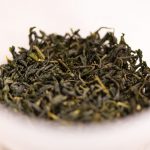
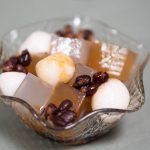




I’m excited to try this. We had a Vietnamese housemate when I was a kid who made us a coffee-flavored dessert of these magical cubes. I brought back a variety of teas from our trip to Japan and now I know what else to do with them.
ohhhhh yea!! let me know how it turns out! 🙂
I haven’t made any Japanese dessert barring a rather disappointing matcha cookie that turned out dry and, frankly, rather tasteless. I’ve thought about making dorayaki but need to get hold of some anko/adzuki beans.
bummer on the matcha cookie, have you tried my recipe with okara? did you use japanese matcha powder? amazon sells both azuki and canned anko – https://amzn.to/2ugaW2h
I’ll check out your cookie recipe. Yes, I used real Japanese matcha powder. I’m sure I can find the azuki/anko locally if I really look even though the place where they USED to carry it closed about 6 mos back.
maybe u didnt use enough? or if u did maybe a bad recipe?
I used as much as the recipe called for. It came from a very well regarded blog from a talented young woman from Japan living in the US/California. Her recipes are very accessible for non-Japanese cooks. Lately she’s supplemented her recipes with videos on YouTube. Others seem to have made the recipe and enjoyed the result based on the comments I’ve seen.
so what do you think went wrong?
No idea. And I had no desire to waste my expensive matcha powder to try again. The flavour was … meh.